Summer means more time spent on your sofa. Unfortunately, this also means more opportunities for spills and stains to find their way onto your furniture, from melted ice cream and sticky drinks to suncream transfers and muddy footprints.
Regular cleaning becomes crucial during these high-usage months, especially since many homeowners avoid replacing furniture for years. Recent research by Roseland Furniture found that one in twenty homeowners have never replaced their sofa, making proper maintenance essential for extending its lifespan.
To help tackle summer’s messiest challenges, Roseland Furniture collaborated with upholstery cleaning expert Georgina Shepherd at Housekeep. According to Shepherd, successful stain removal depends on acting quickly and using the right techniques for different types of spills.
Here’s how to handle the most common summer sofa stains effectively.
1. Always check care labels first

(Image: © Shutterstock)
Before attempting any cleaning method, Shepherd emphasizes the importance of checking your sofa’s care instructions. “Always check the care tag first (usually found on the seat covers). If it says ‘S’ or ‘X,’ you’ll want to use solvent-based cleaners or call in a professional.”
She also warns against using harsh cleaning products that can cause permanent damage. “Avoid harsh detergents, bleach, or soaking the material as these can cause irreversible damage. If in doubt, a professional upholstery cleaner will be able to advise.”
2. Food spills and sticky messes
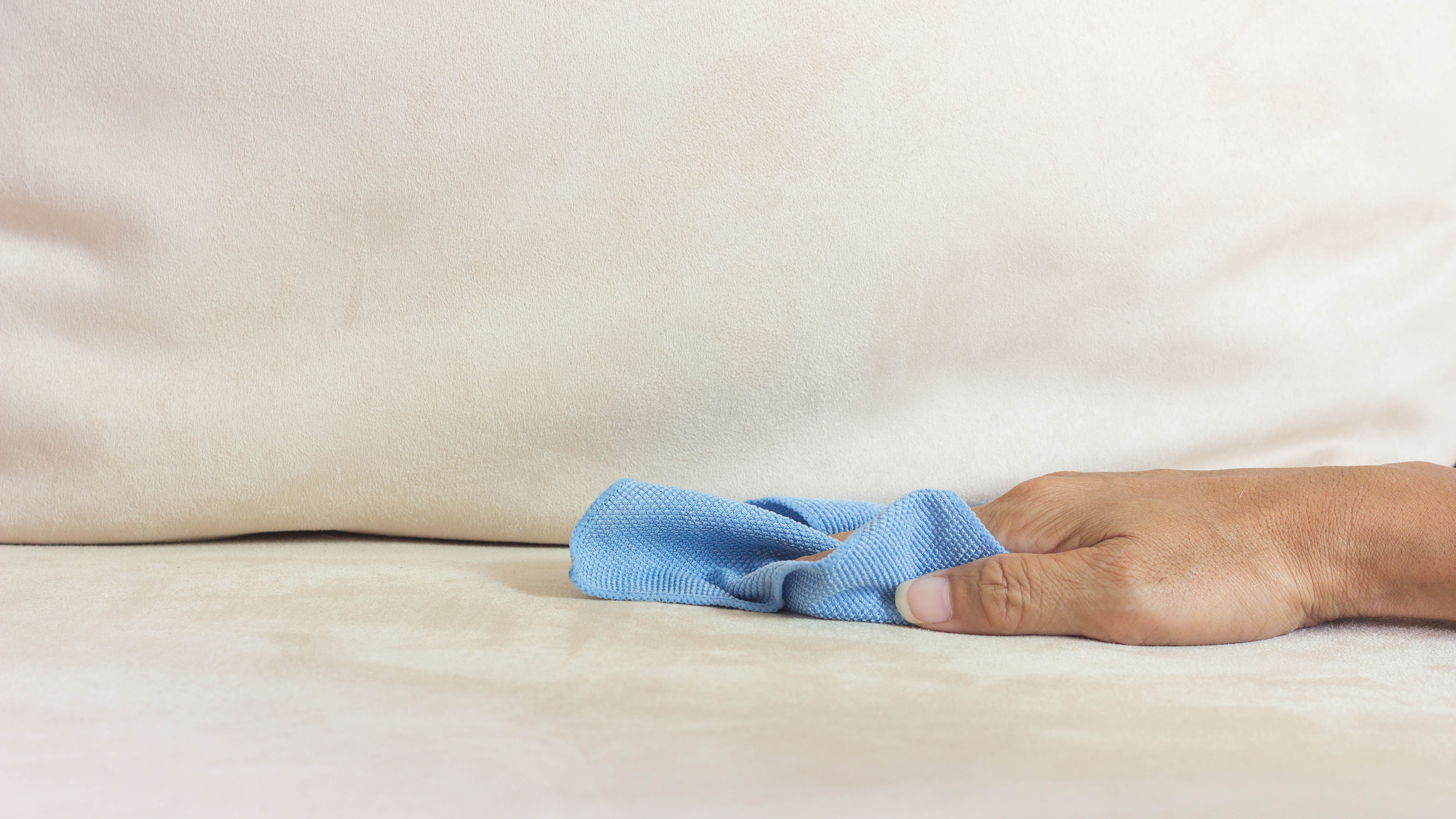
(Image: © Shutterstock)
Summer barbecues and outdoor dining often result in food ending up on furniture. Shepherd recommends a systematic approach to food spills that prevents stains from setting permanently.
“Start by gently scraping off any solid food. A spoon can come in handy for this. Then blot (don’t rub!) the stained area with a clean microfiber cloth dipped in cold water. Hot water can actually set the stain, so try to avoid it.”
For most sofa materials, including leather, polyester, and velvet, she suggests using “a mix of water and a small amount of washing-up liquid” but cautions to “be careful not to soak the fabric, especially velvet, which is prone to water stains.”
3. Drink spills and liquid accidents
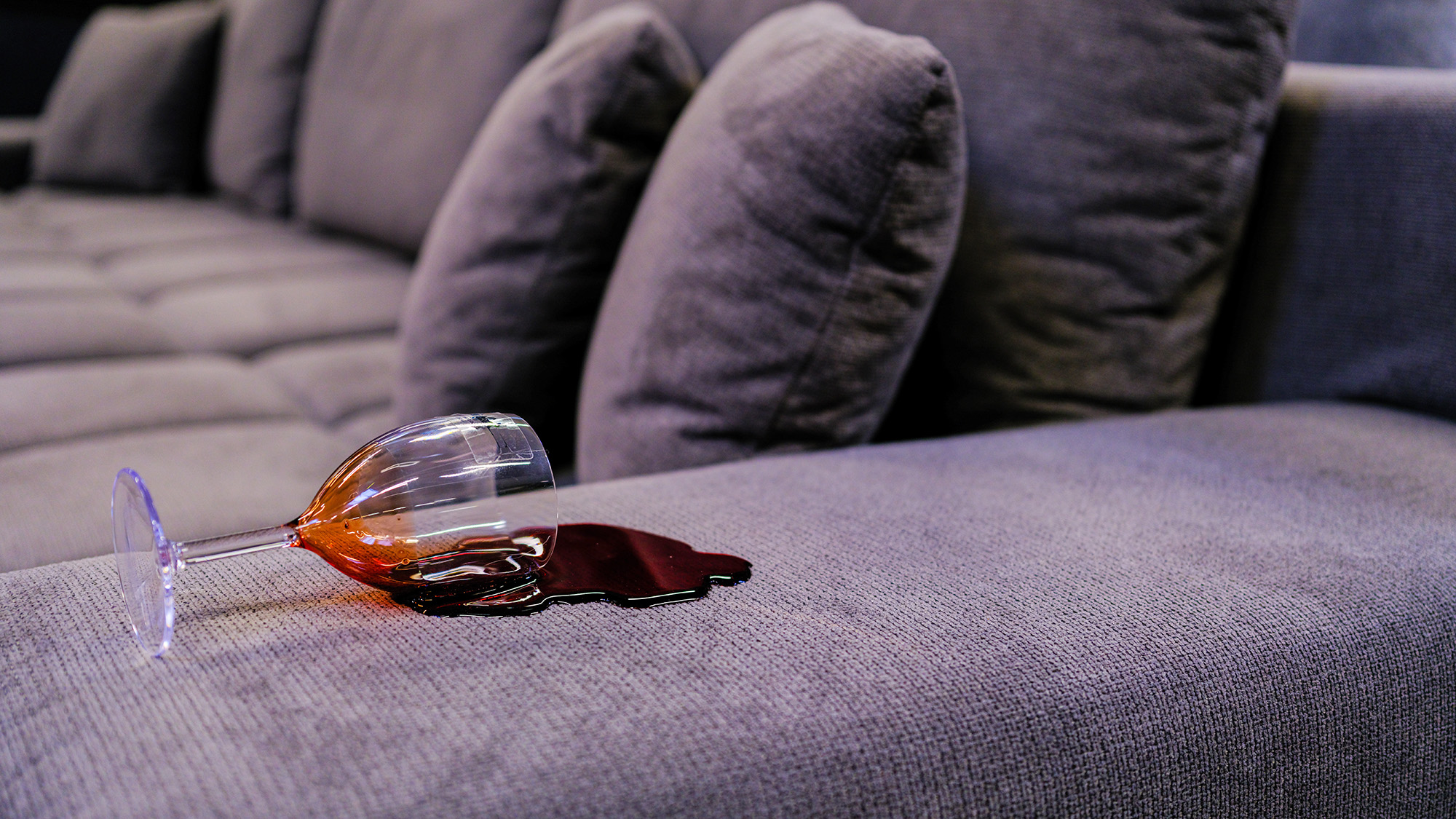
(Image: © Getty Images)
Spilled drinks are perhaps the most common summer sofa mishap, whether from knocked-over wine glasses or children’s juice boxes. The key is immediate action to prevent liquids from soaking deep into cushions.
“With drink spills, use a clean paper towel to soak up any liquid. Blot with cold water to start with, and if the stain is still there, dip your cloth into a washing-up liquid and water solution,” advises Shepherd.
This method works for most beverages, but she emphasizes checking care labels as different sofa materials may require specific treatment approaches.
4. Suncream and oily stains
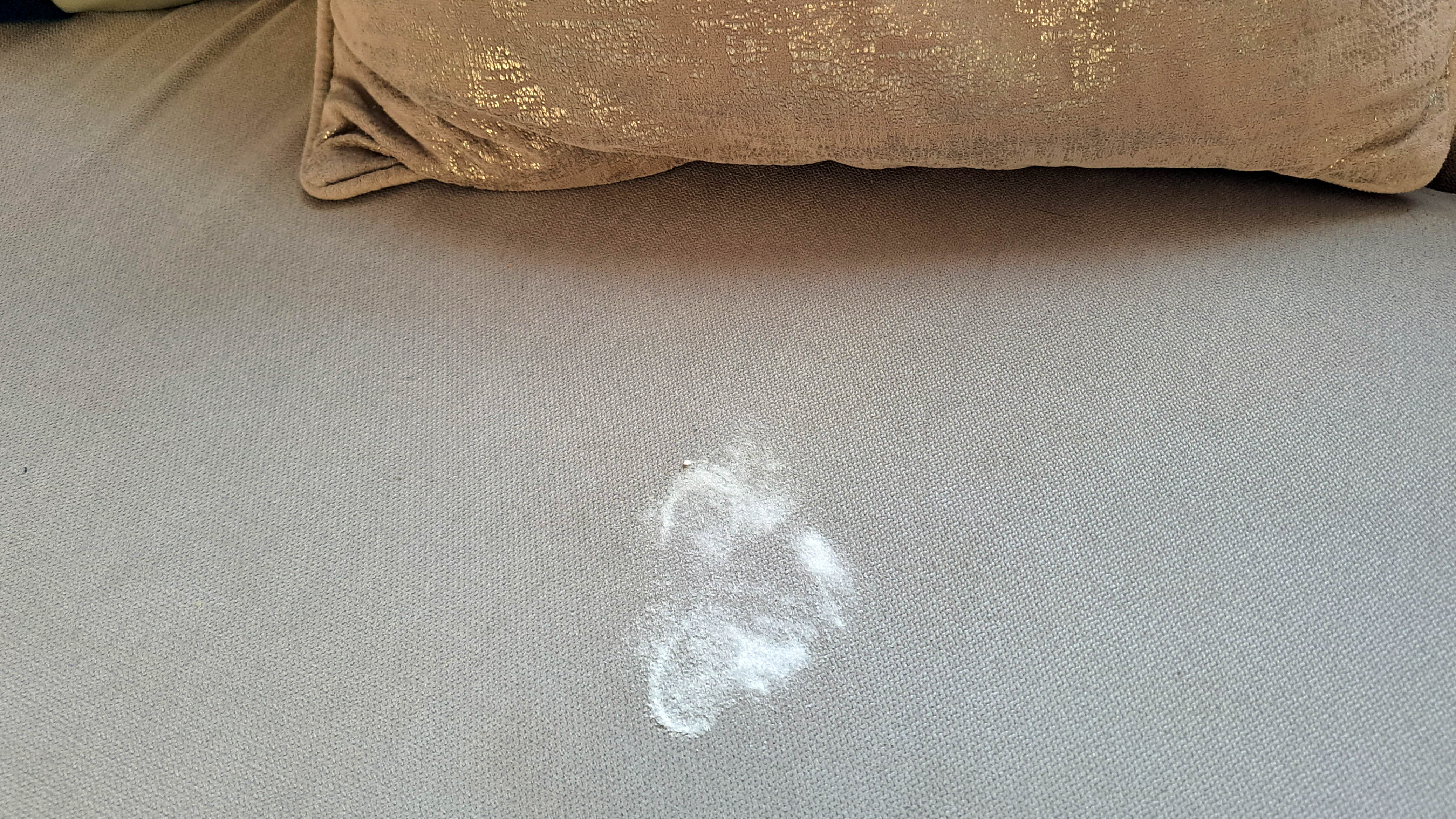
(Image: © Future/Tom’s Guide)
Summer inevitably means suncream transfers onto furniture, creating stubborn oily stains that can be challenging to remove. Shepherd explains that these require a different approach than water-based spills.
“These can be a little tricky to remove. Blot away excess suncream first, then sprinkle baking soda to absorb the oil. Let it sit for 10-15 minutes, vacuum it up, and gently blot the area with soap and water.”
The baking soda acts as an absorbent, drawing oils out of fabric fibers before traditional cleaning methods are applied.
5. Mud and outdoor mess
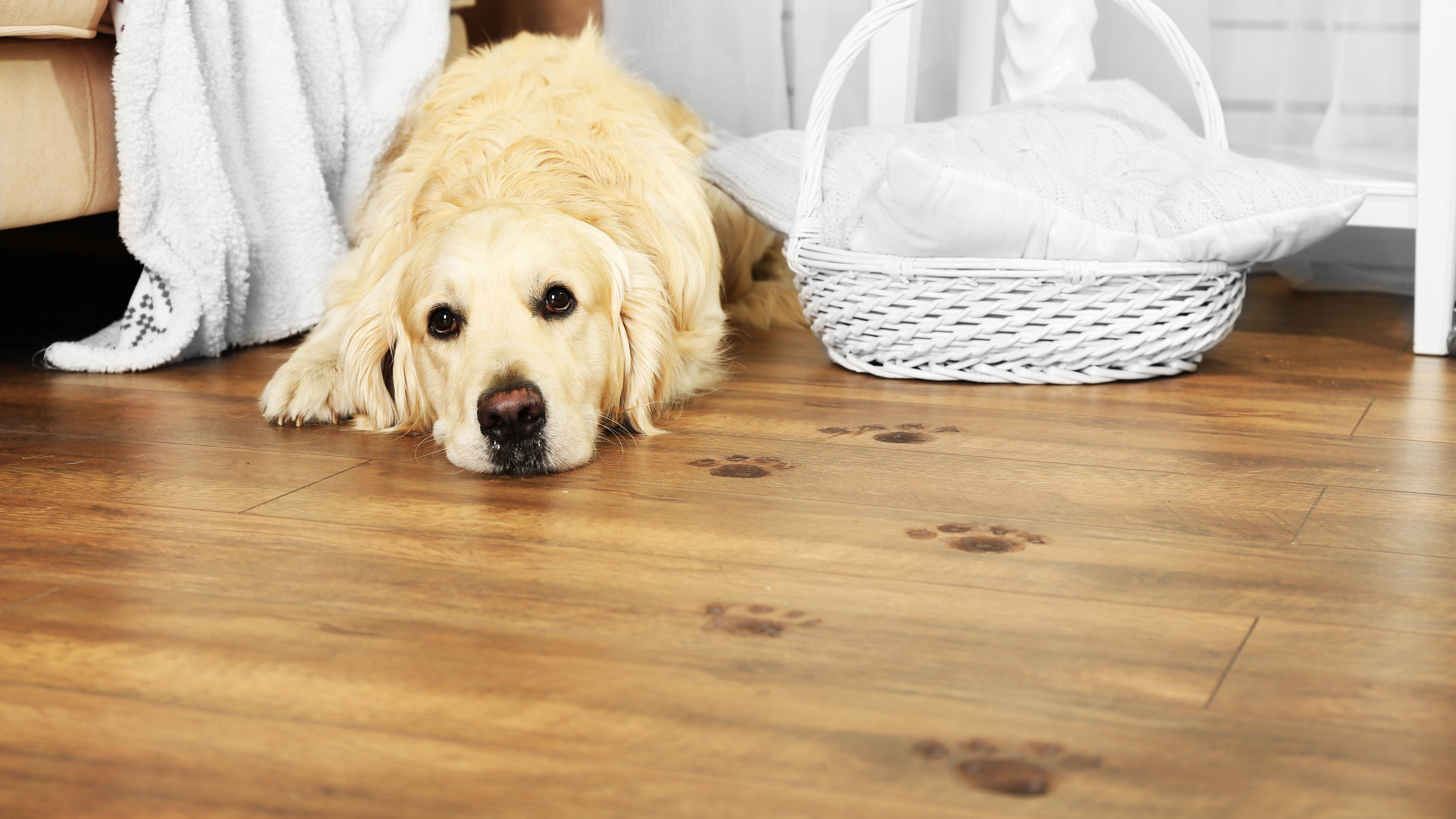
(Image: © Shutterstock)
Summer activities often result in muddy footprints and dirty paw prints on furniture. Shepherd recommends patience when dealing with mud stains rather than rushing to clean wet dirt.
“Let the mud dry completely, then vacuum the loose dirt away. Follow up with spot-cleaning using a cloth dipped in soapy water.“
This approach prevents mud from spreading further into fabric fibers and makes removal more effective than attempting to clean wet mud.
6. Pet dander and allergens
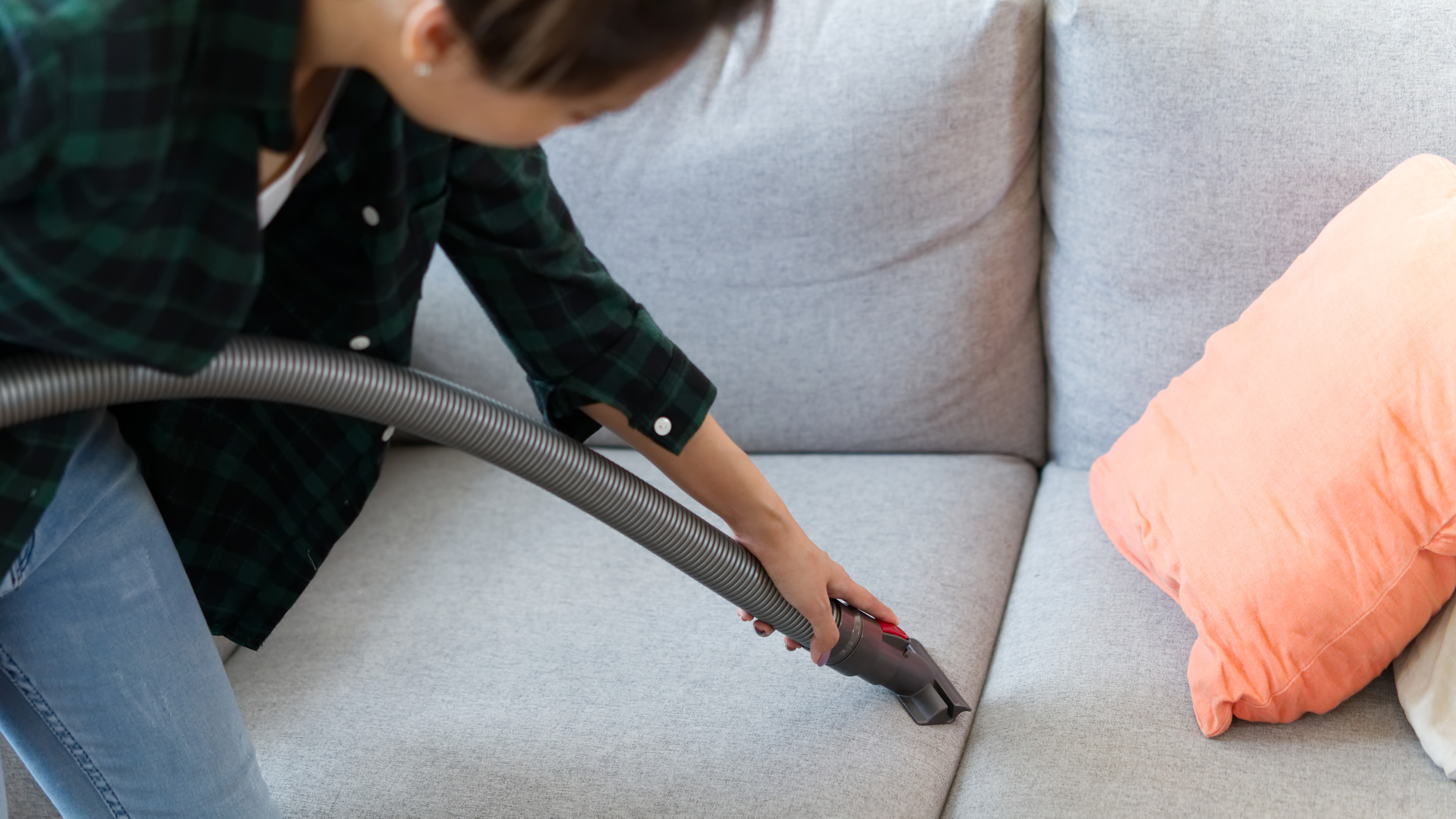
(Image: © Shutterstock)
Increased time indoors during hot summer days can make pet dander more noticeable on furniture. Regular maintenance helps keep allergens under control and improves air quality.
“Vacuum your sofa regularly. Opt for a vacuum with a HEPA filter (high efficiency particulate air filter) — it’s excellent at capturing tiny dust, hair, and allergen particles,” Shepherd recommends.
For homes with pets, she suggests deep cleaning sofas every 3-6 months rather than the standard once or twice yearly schedule.
Follow Tom’s Guide on Google News to get our up-to-date news, how-tos, and reviews in your feeds. Make sure to click the Follow button.